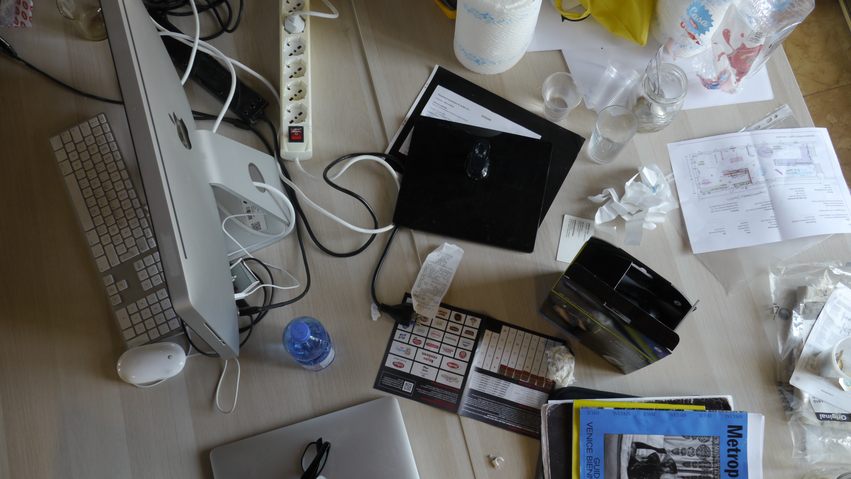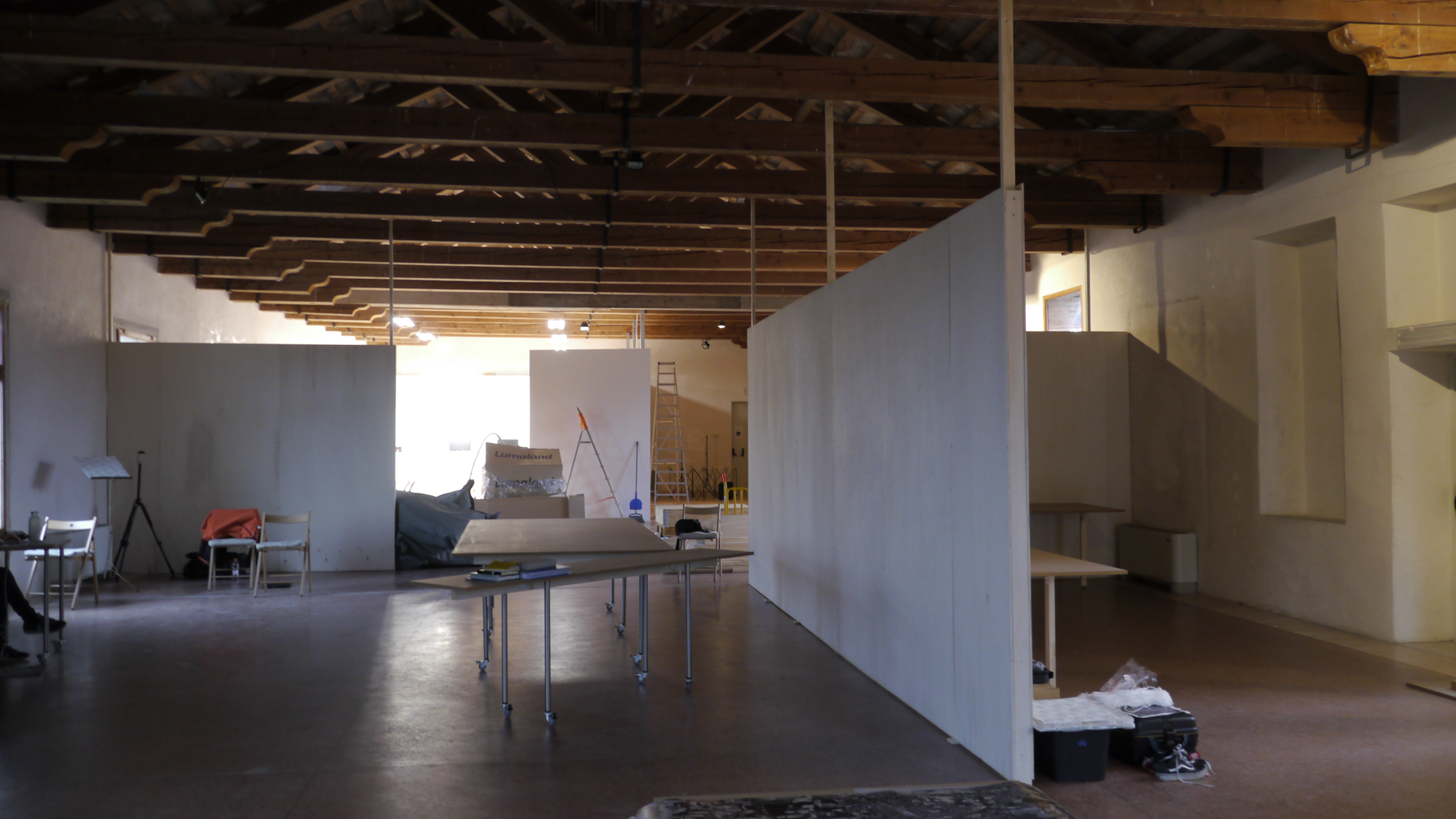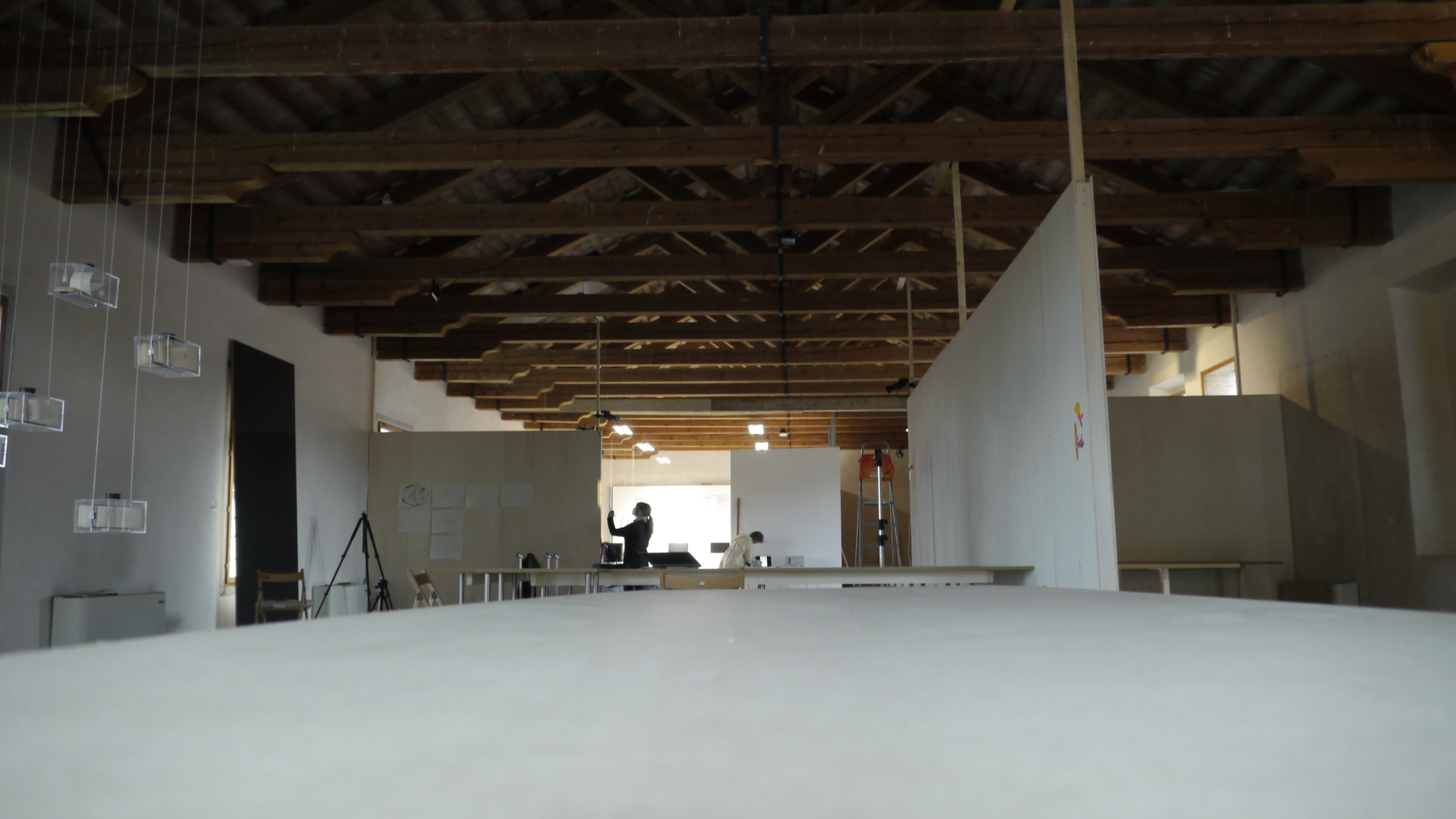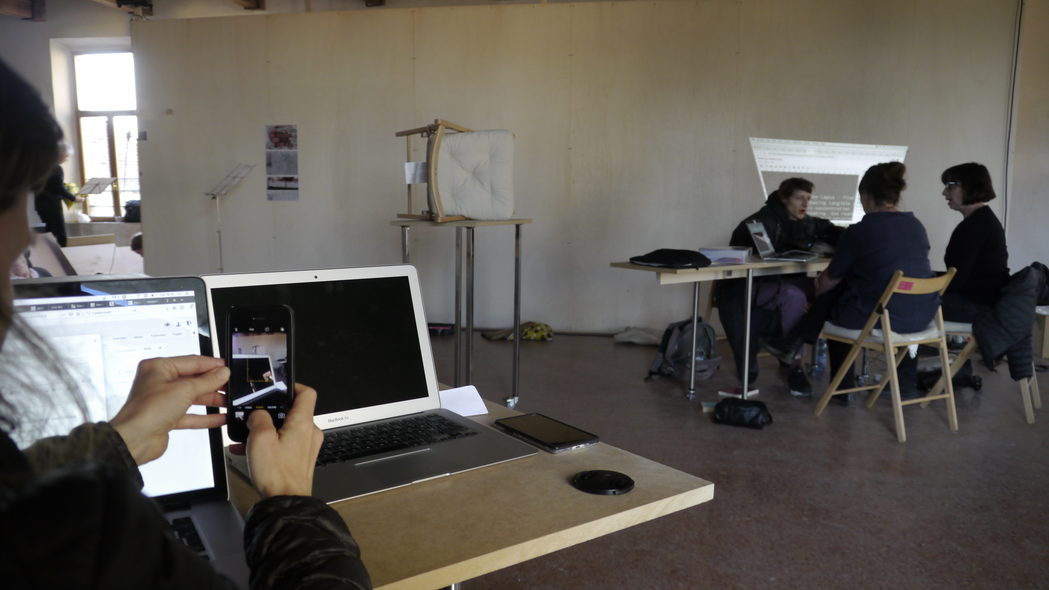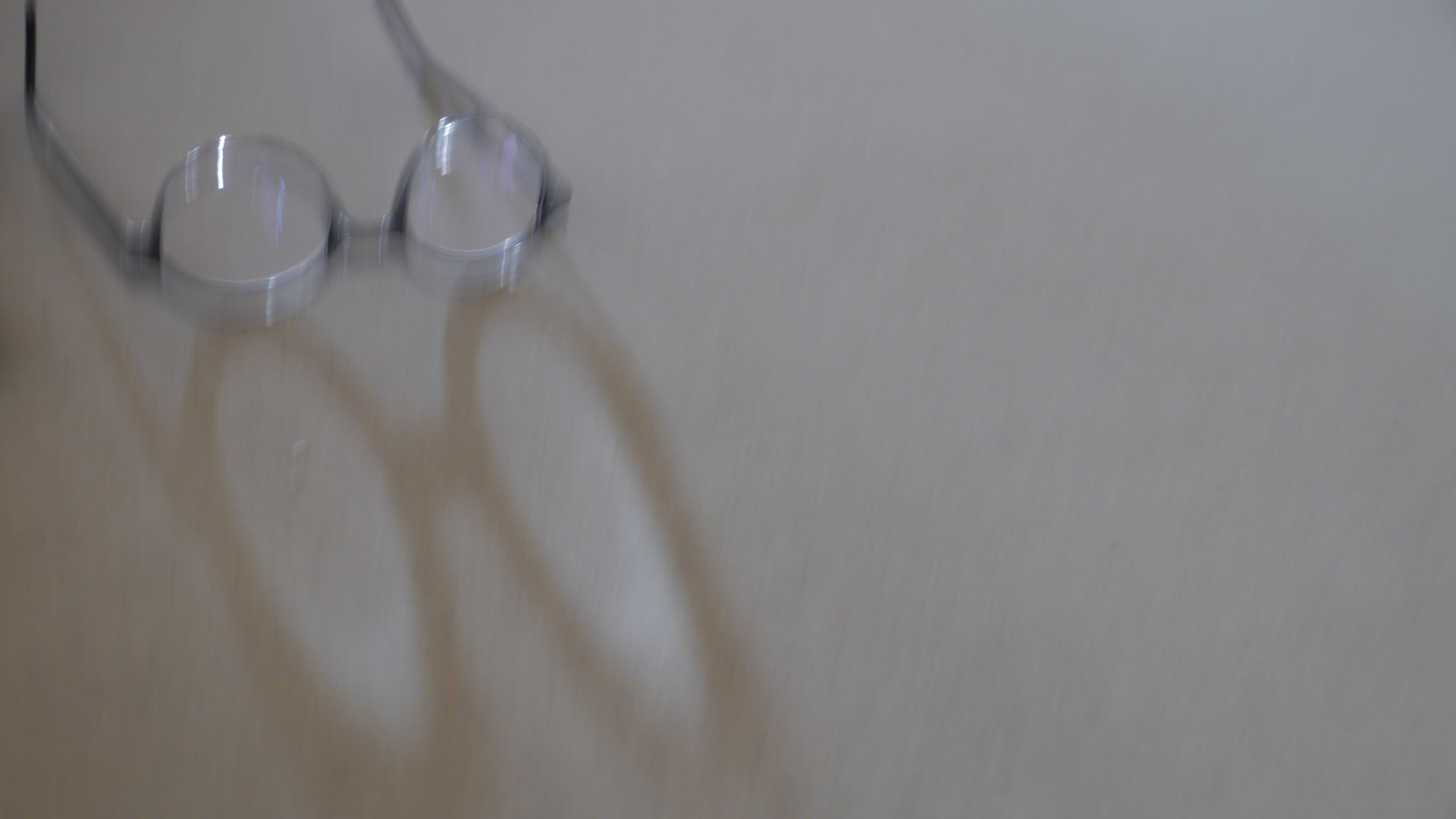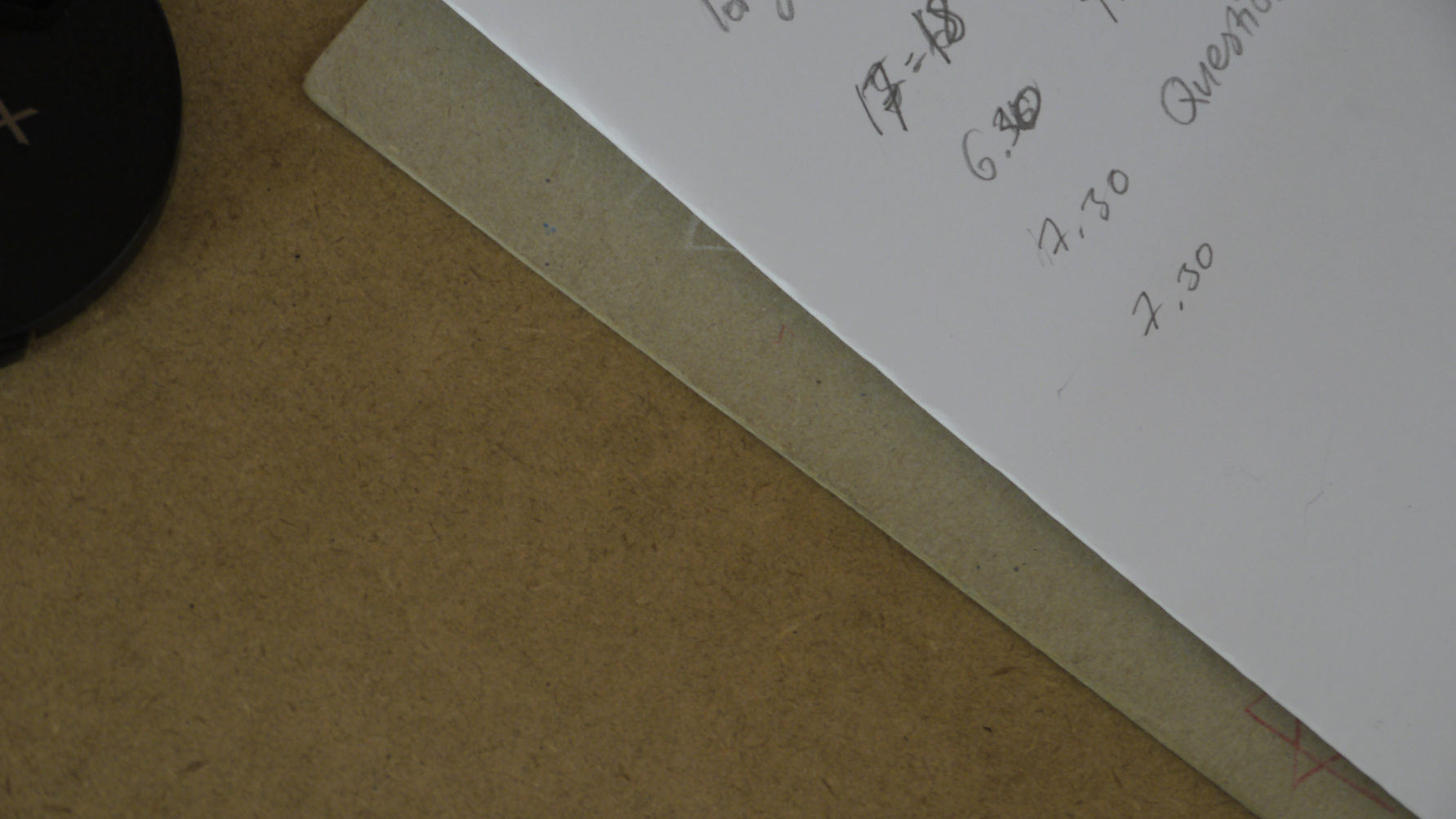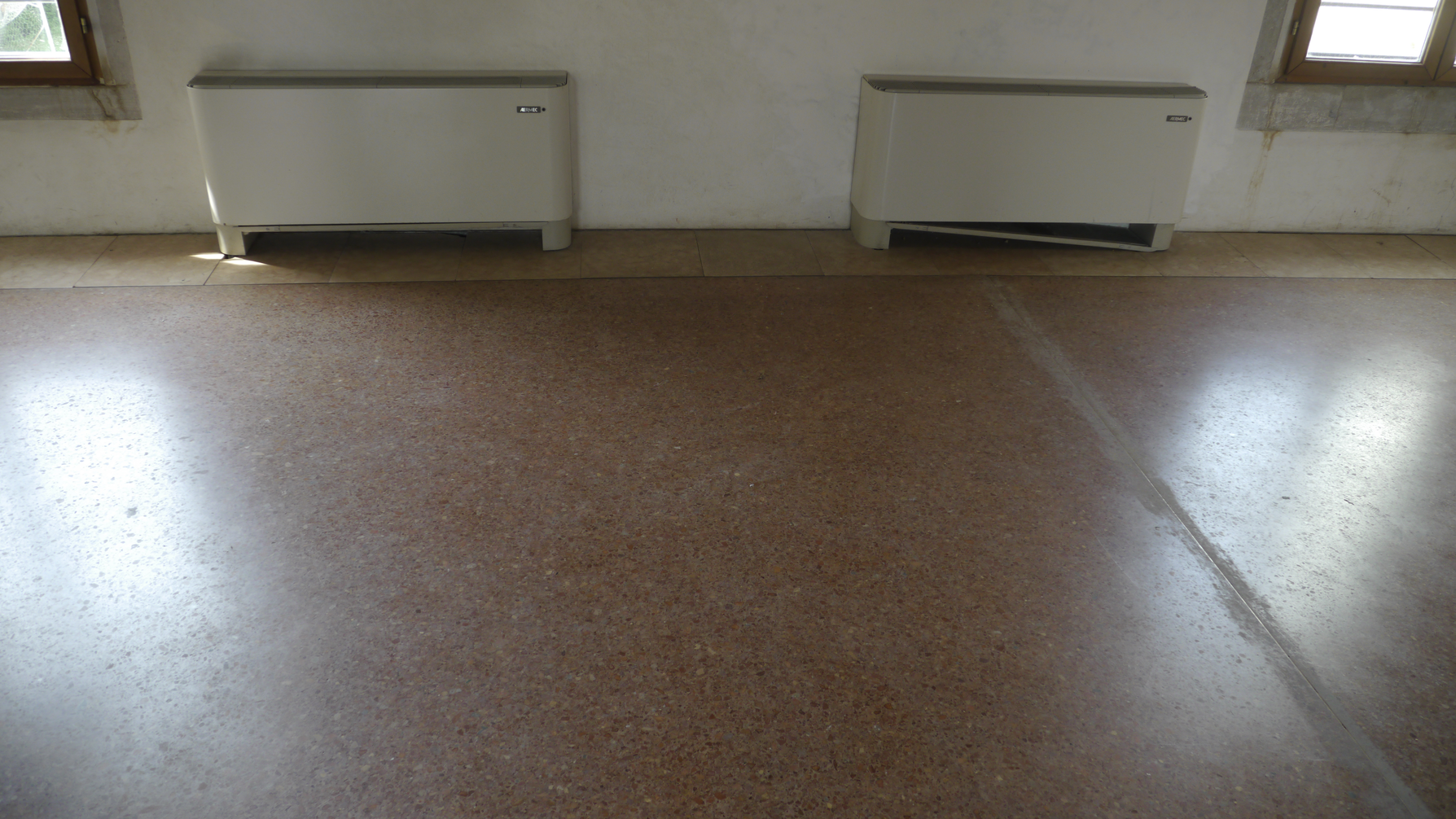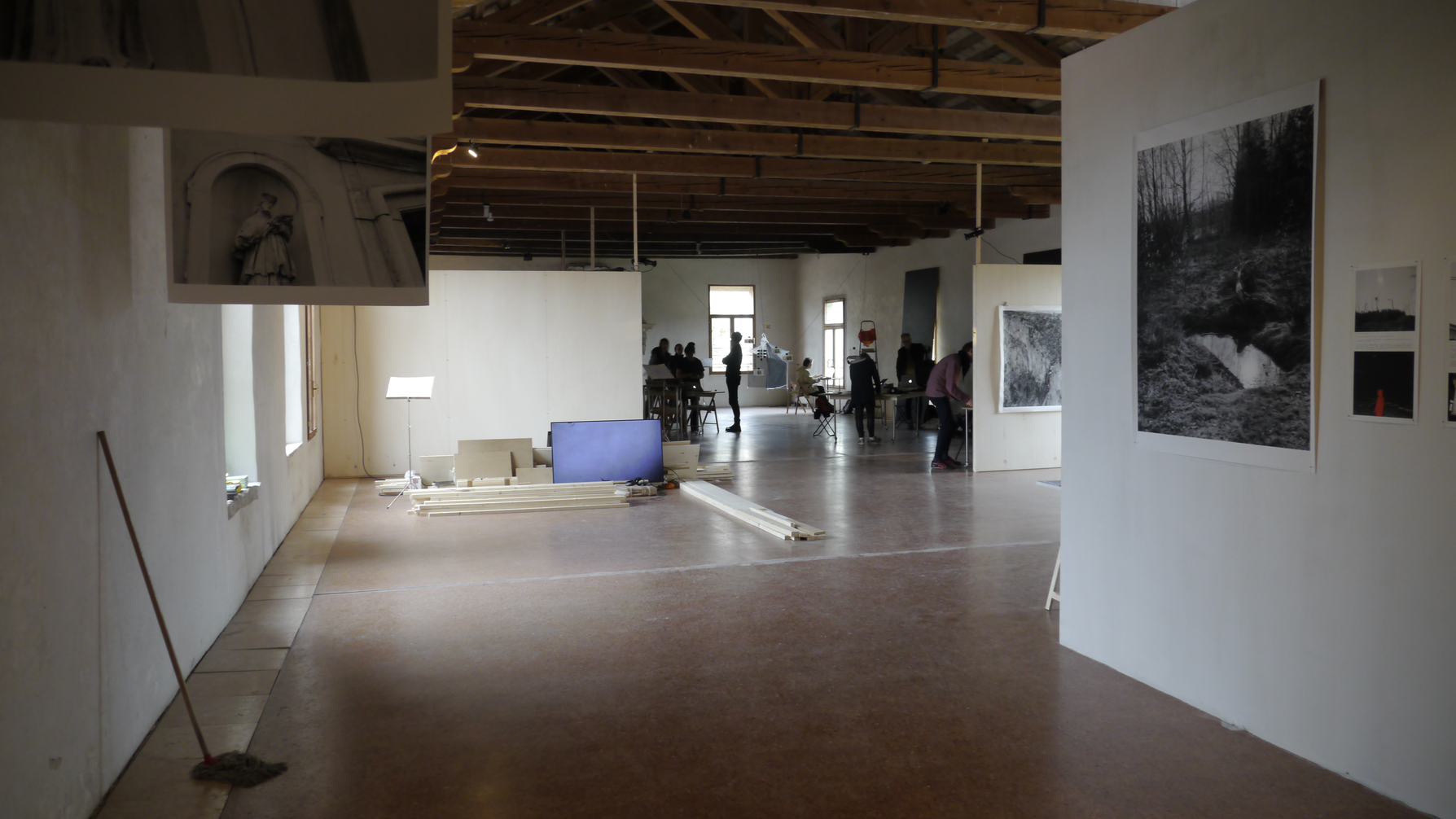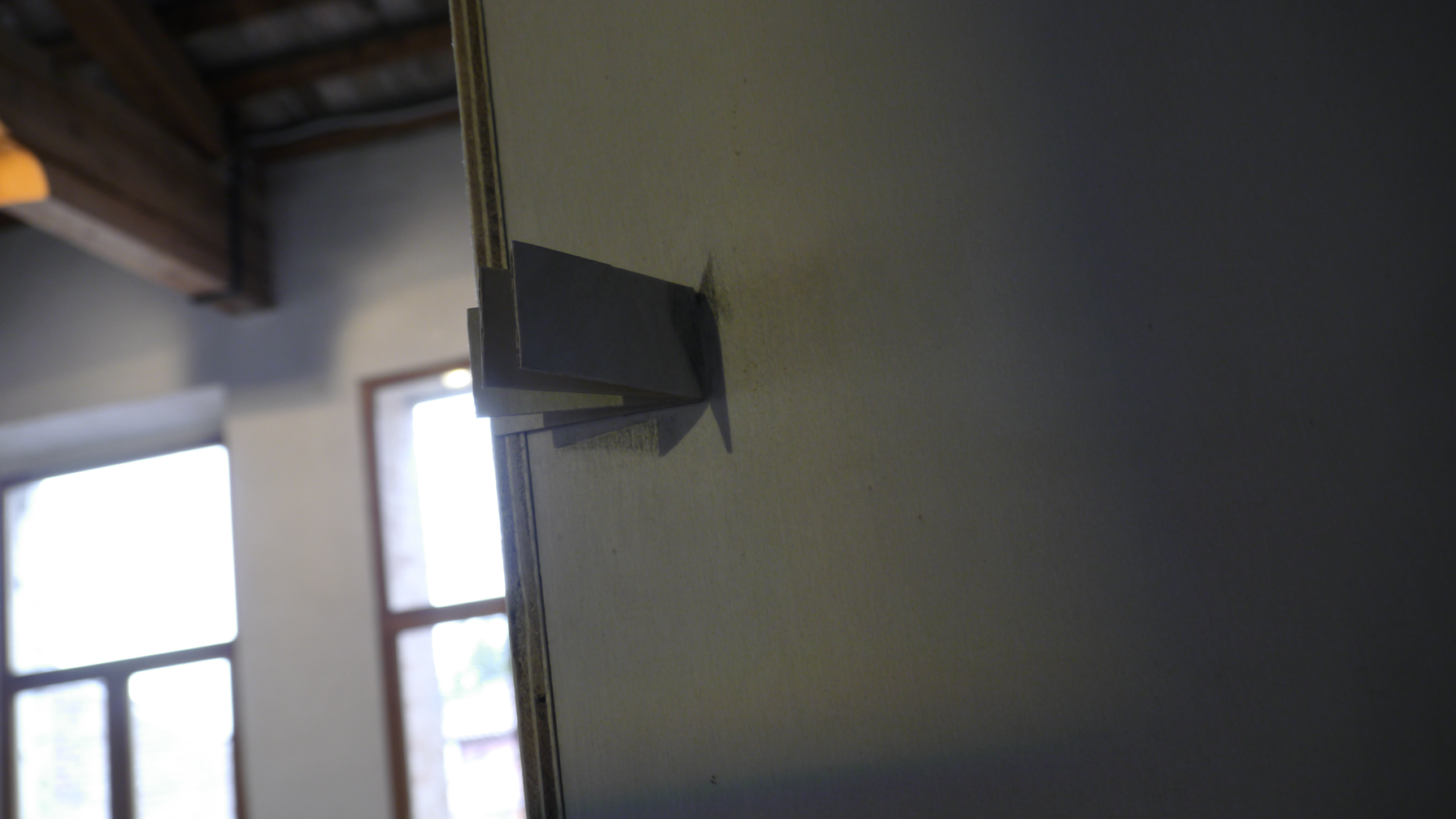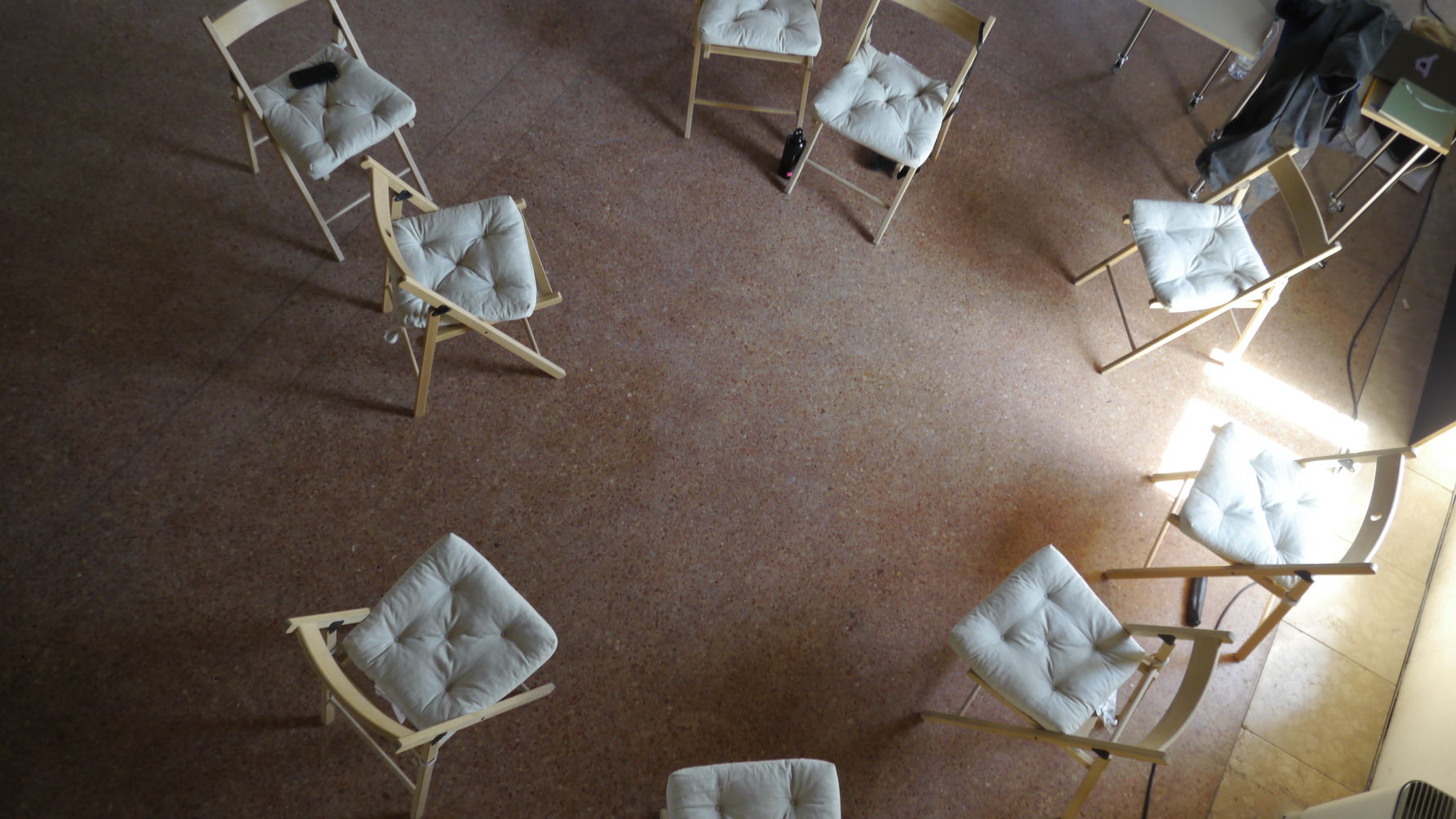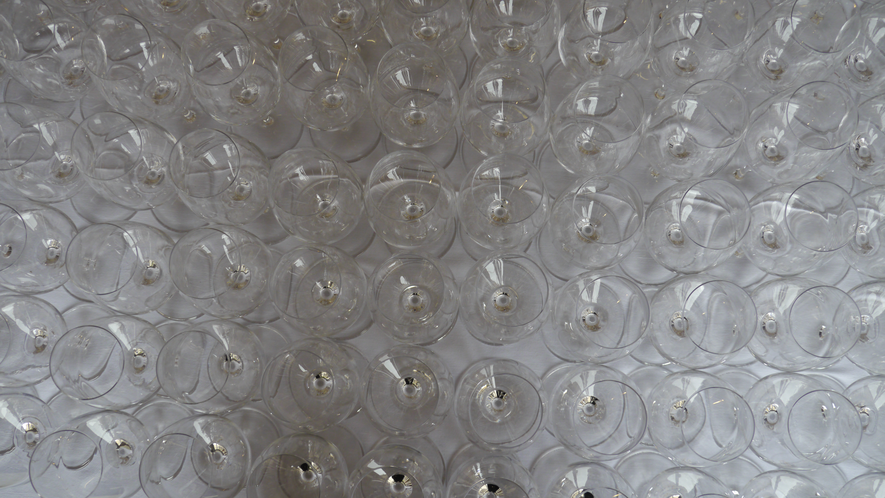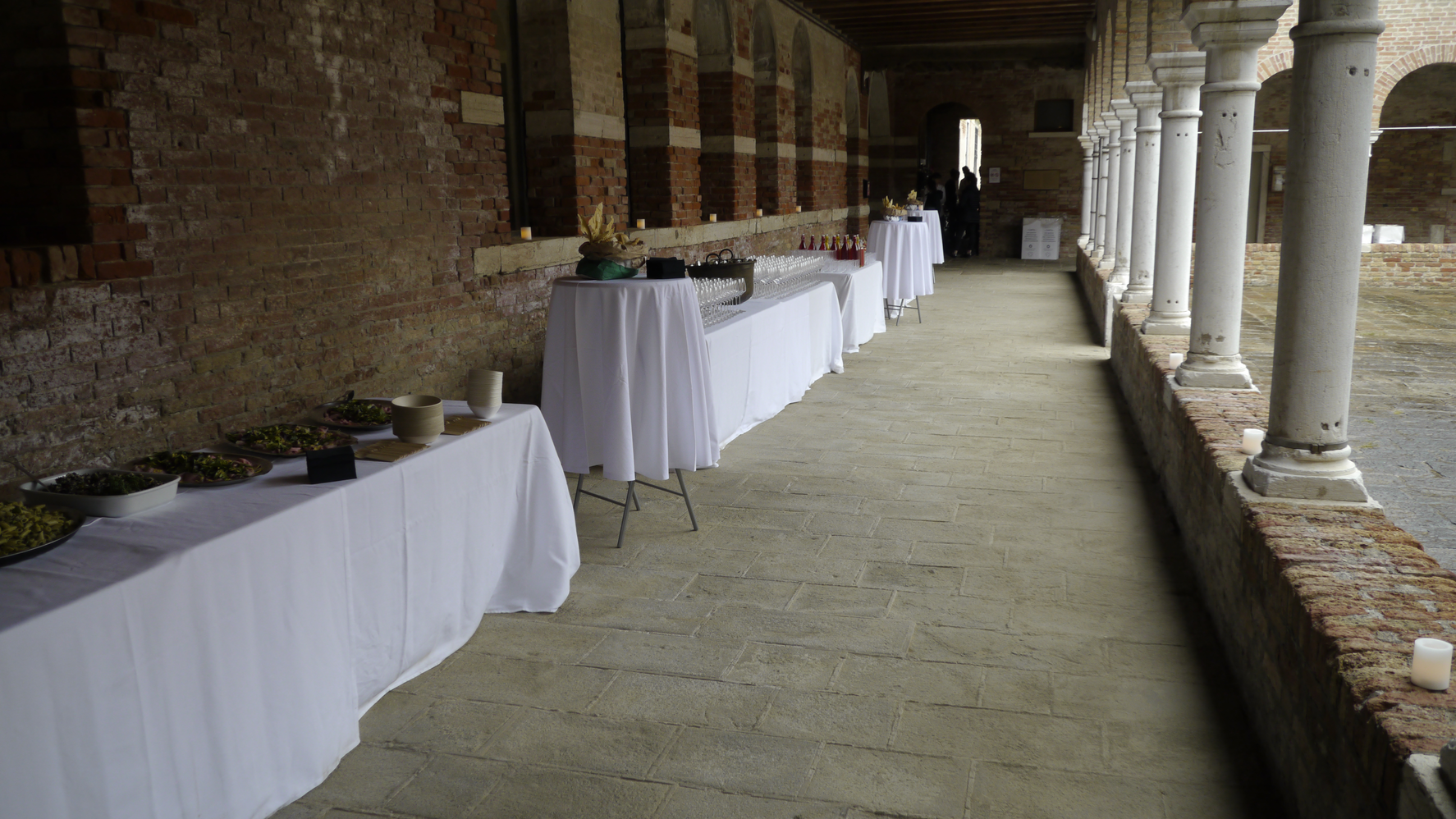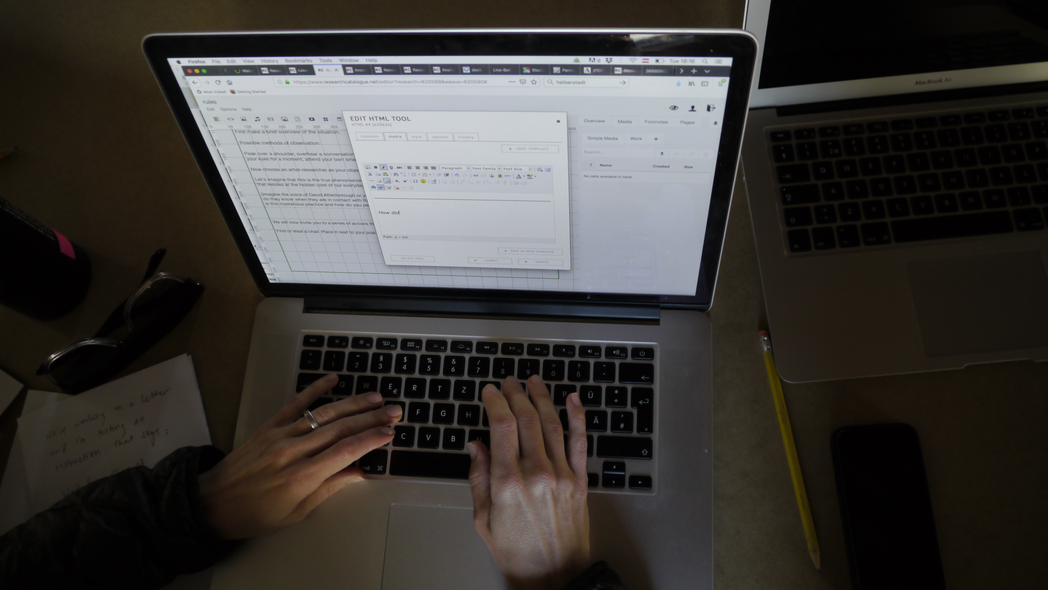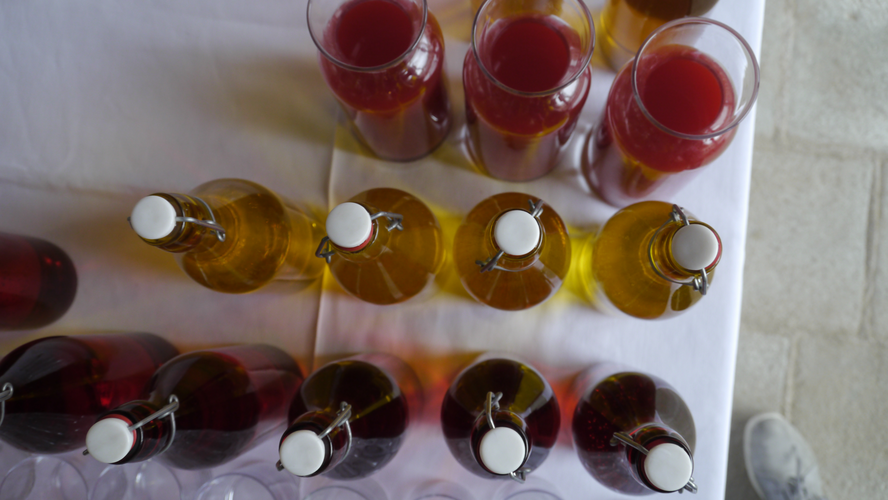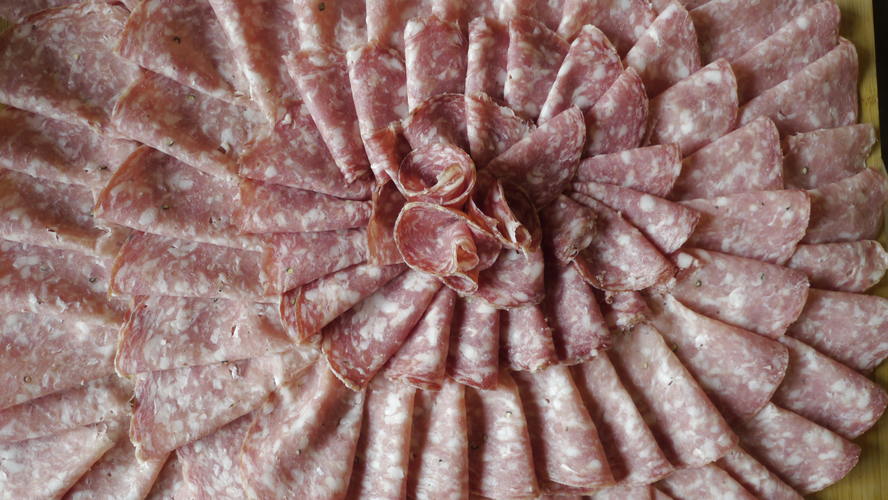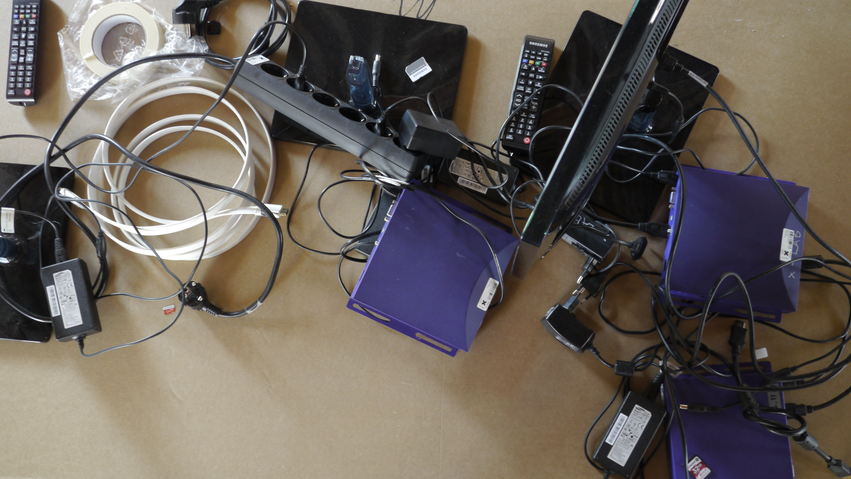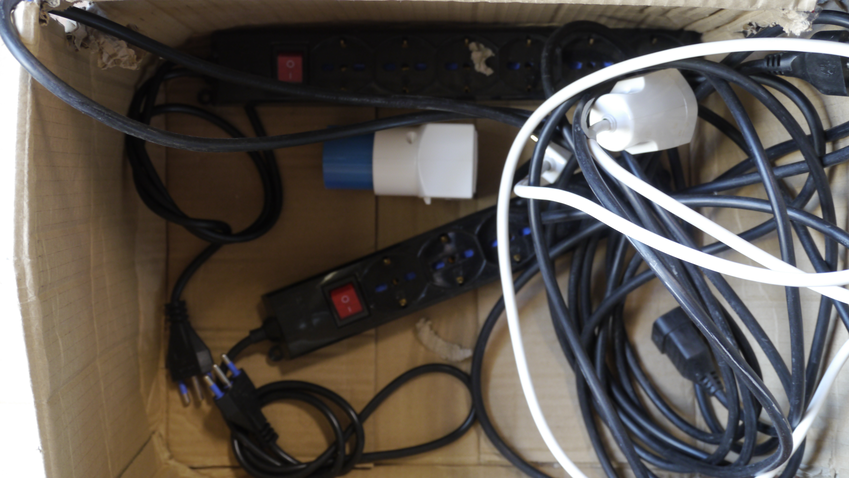2.57 pm
Opening day. There is a dramaturgical tension between the artist-reseachers' focus on practice and the event of opening. Practices seem to be in process, not finished, unpolished, open-ended. The opening seems to invite closure, finalisation, polishing. The artist-reseachers struggle accordingly, keeping seemingly calm, but shivering from tension inside. The air is thicker than yesterday, the intensity of activities is high, emotional matter is flowing through the space and stagnating in the corners.
The tool archipelago audienced on Day 2 has vanished into the air.
7.21 pm
Finished a draft for the first etude, but the printer is not yet here, so it remains as a draft in my computer. Sketched some text for the envelopes, which my letter would inhabit. After being finished, I opened the window and admired how the table looked in front of the view. Wind got stronger, the envelope flew out from the window and landed on the grass outside of the pavilion.
Day 2 - May 6th 2019
10.21 am
The blackboards are shining. The sunlight blocked by them is radiating from the sides, creating an appearance of a halo. Like the light emanating around the head of a saint.
Artist-researchers are moving things around in the space. I am thinking about occupation, even colonisation. They seem to occupy a space for their purposes. Opening new spatial colonies for their research processes. It is convenient for me, for the audience. While they take the responsibility for taking over this site, I can just observe, even enjoy it. Even if my audienceness is self-imposed, when I am an audience member, I can let go of some of the responisbility. It is a partial exemption. Moderate and institutionalised irresposibility. I am a second-generation colonizer, if you allow me to use this loaded word in this context.
7.04 pm
The day is turning into evening, the light fading from the pavilion. There is a gradual slowing down of activity going on, but an end is not here yet. I am tired, but not exhausted - I think that switching between roles makes this easier. Or in other words, it is endurable due to the dramaturgical changes in the role of the audience: sometimes the event invites or demands an active participation from the audience member, sometimes it allows a simple observer position for them. Both would be demanding on their own on this scale. Active participation renders me visible, subject to evaluation and critisism. "Passive" observation is heavy on my organism in large doses. The " " are there to express that an audience position is never passive or non-participatory.
Day 3 - May 7th 2019
12.15pm
The show is on again / still. Someone is reading a script, someone fixing devices, someone drilling, some are discussing, someone has a meeting with people who are not here, someone is wrestling with the printer, someone is audiencing.
4.57 pm
Opening in 33 minutes. The pavilion is otherwise almost deserted, everyone is ready, but the artist-reseachers of the Through Phenomena Themselves - research cell are all here, practicing. The clean-up crew comes and attempts to empty the space, but the artist-researchers' bodies resist: they start to nod and strech towards the door, but fingers are still massaging the keyboards, a magnetic force is pulling their hearts towards the research stations. They rise one foot at a time as a broom sweeps the floor beneath them, they write standing when the chairs are removed, eyes fixed on screens, projections, pages, pieces of artistic matter.
Day 6 - May 10th 2019
9.04 am
When I have audienced the event for several days and the attendance seems to consist of several acts (days), which alternate with intermissions (nights). The event however does not become absent on intermission either, but lingers in the audience member's awareness. Even when not being at the event, I am at the event.
The whole event has been coloured with social tensions, unverbalized for the most part. The artist-researchers are cautious of their actions, they create limitations for each other, abide by implicit power structures and quickly remove any traces of their practice from the sight of pavilion visitors.
From the perspective of audiencing them, it is an emotionally catchy dramaturgy at least. The intentions of shared processes and exposing practices sprout and wither, rise and fall, ignite and die out. It has a dramatic flavor.
3.15 pm
The general implicit instruction is "don't touch". This is code of conduct is adapted from fine art gallery context. Objects, images, video projections and words are on walls and tables of different kinds and they are spectated. Words are read, and audio files are listened to with headphones. The routes that are traveled in the space are instrumental to this spectating, reading and listening. The audience position is vertical: standing and walking. Any of this is rarely questioned.
However, earlier I attended the pavilion through the perspective of a humanoid. Then it appeared as a place where humans try to communicate, express or dialogue about the world as it appears in their consciousness. Usually, especially in everyday life, the "physically" sensed world with subjective locality and chronological time is considered reality. What takes place in the mind of the humans does not however follow this model of reality at all. The pavilion seems to consist of expressions of this varied and multi-form reality: images from other times and places, conceptual constructions extending across different levels of cognition, intensities of absence. A thought emerged in this contemplative state that science might touch the same modality, but mostly through such narrow perspecives that the ambiguity and un controllability of these entanglements will not be touched upon.
But also here, we are not encouraged to touch.
3.34 pm
Within the research cell Through Phenomena Themselves there are mostly evolving material structures. On the big wall there is an A5-sized drawing fo a chair, three small Serendipity-cards with the image of a camel, two A3-sozed papers with a not "Tick Variation, number 1, 9 May 2019, Saara Hannula & Esa Kirkkopelto", two A4-sized photographs of walls, two minimal constructions thin plywood, a small photograph of the other one and a small not saying: if there was a spotlight hitting the object from the left, how would the shadow appear like?" On the floor next to the wall there is an image of a floor, some parts of posiibly wall-material and seven A4-pages of "Notes of an Audience Member".
11.38 am
A group of people are gathered in the other end of the room. They are looking at something that is behind the corner, invisible to me. Some are pointing at it with their fingers, like they are evaluating something. The sun functions as a stage light, highlighting the area where they stand.
11.43 am
An artist-researcher provides me with some imaginative instructions. The whole space transforms: my attention is flooded with the different intensities of light, the spectrum of colours and the soundscape with bursts of noise and echoing conversations. Suddenly I am surronded by an all-encompassing art event.
People gather to view the behind-the-corner again. They have turned into characters of a theatre play, building a situation into a room, anticipating the moment when the first lines are uttered by the main characters, whose arrival to the front stage is yet in the potential future.
11.59 am
Coming back to the idea of colonisation. I feel like a colonizer. The act of acclaiming oneself and audience of something that has not been assigned art (or something else that is meant to be audienced) by an author, feels like, in principle, a violent act.
1.30 pm
A meeting of the artist-researchers has taken place. While taking part in the meeting as a peer of the other artist-reseachers, I still had the opportunity to entertain myself with short moments of audiencing this peticular aspect of the event. If the artist-researchers are the ones that activate, occupy and create the space of the event, their meeting is a moment of trying to find how their wills resonate, clash and nourish each other. The meeting took place in a circle-like form, hinting at a shared desire to find some forms of consensus, unity or communality.
4.18 pm
A sub-plot has appeared, carrying its own dramaturgical and theater-historical arc across the time span of the event.
"Godot is bringing the printer tomorrow", one of the authors of the event informed me.
As printing is elemental in my original plan of creating etudes of audience in a letter format, this seems like an ingenious trope that can create the necessay tension for the event to hold the interest of its audience.
5.19 pm
An archipelago of tools, materials and other assemlages of things is traveling across the space. These things appear to be of different category than things that are clearly put on display (in the realm of art these would be the "art works") or things that are actively used ("work in progress" or "research practices"). Rather, these things are
left in peace /
hidden in plain sight /
stored in an unused location /
installed for the adventorous audience member to find.
7.28pm
I have encountered the dangers of artistic practice and collaboration. Having agreed upon a collaboration of artistic research, I entered it only to find myself pulled into a hypnosis of making, unable to attend the event as an audience member. This mutual annulment between the two registers, making and audiencing, is intriguing and disturbing. To engage in making disturbes my audiencing, and vice versa: my audiencing is disturbing a proper engagement with the practicing required here.
Or, to be honest, this is an simplification and maybe even incorrect. Anyhow, I have neglected the event.
However, here it is, going on, noticed or unnoticed.

